****** THE EYES AND EARS OF THE DARK CONTINENT ******
"A swinging safari"
Men
travel to the Dark Continent in search of wealth and fame, either looking
for gold or diamonds or hoping to discover new tribes or ancient temples.
There are indeed some women who venture into this also, but they are
rather the exception than the rule. Most ladies simply follow their
husbands and try to make the best of their stay in these godforsaken
lands by playing bridge once a week, attend a rare cocktailparty or...
go on safari.
The wifes of Lord McDee, le Comte de Rixansart, Markgraf von Spritzen
and the mother of Gewestbeheerder Van Lancker were no different. The
natives called them "the Four Feathers", because of their
delicate, be it somewhat overfashioned parisian plumed hats. They were
soon to experience that even well organized safaris are not without
danger... Unknown to European intelligence, Dahnist's units (the Dahni
being a fanatical religious leader) had penetrated the Upper Nile region
and overrun the coastal battery of El Tap, exactly the spot were the
safari party of our four unfortunate ladies had planned to camp. As
soon as the Dahnist' commander realised the importance of his catch,
he send a ransom note to the British, French, German and Belgians. Instead
of gold and weapons, the French cuirassé colonial "Charles
Martell" carrying a substantial force of infanterie de marine
and légionnaires was dispatched to deal with the matter.
The French commander was convinced that the sight of his mighty vessel
would be more than enough to make the Dahnists sue for peace. How wrong
can one be...
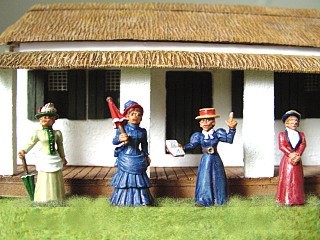
The "Four Feathers": Lady McDee, la Comtesse de Rixansart, Markgrafin von Spritzen and mevrouw Van Lancker.
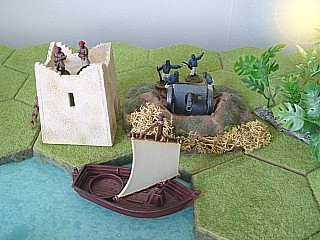
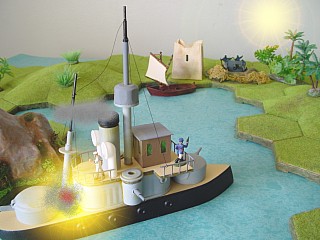
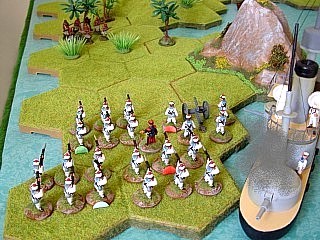
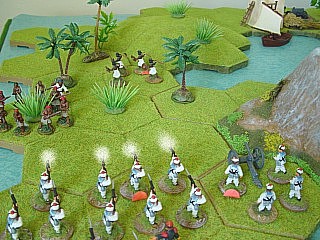
Smoke is still emerging from the Charles Martell.
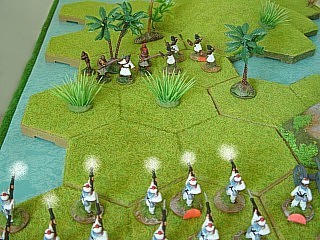
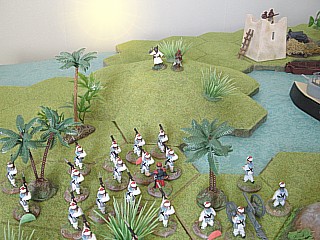
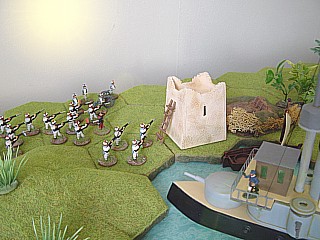
The French infanterie de marine now started concentrating its firepower on the askari unit, forcing it back steadily, but at no small cost: one of the French units suffered many casualties, but fortunately for them some of the askari must have been out of ammo and had been firing pebbles, so most wounded were treated on the spot and were soon back in line. Finally, only a few askari (and their brave commander) remained, still defending the hill that lay in between the French and the battery. Since they refused to surrender, French snipers took a shot at them, but in the end they were overrun and killed to the man. When the French finally entered the battery and its tower, they found the position abandoned and the gun gone. No sign of our feathered ladies either. The Dahnists had abandoned the position and moved inland. The French relief force was to follow them on this swinging safari...
TO BE CONTINUED...